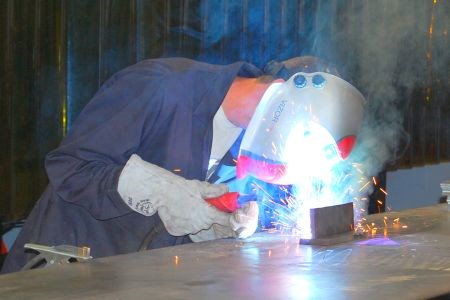With mining exploration and development reaching a fever pitch in the Kirkland Lake area, the region’s service and supply firms are reaping the rewards with heightened profits and plans to expand.
Located a short hop from the heart of Kirkland Lake, Nordex Explosives is one such company. Having commissioned an emulsion explosives manufacturing plant on its 120-acre property in late 2008, the first of its kind in Canada in 10 years, Nordex has since seen a strong response from the market.
First-quarter results for 2010, as announced in May, soared 120 per cent above the same period the previous year, continuing the company’s trend of record sales through the prior 12 months.
“When we started look at business plans and other stuff a number of years ago, we thought we had an inherent advantage by having a licensed facility that sat, geographically, literally in the middle of the heart of mining in Canada,” says Nordex COO Jim Taylor.
“So our philosophy from day one is how do we take advantage of that? One of those is that we can get raw materials delivered more cheaply than finished products.”
The company’s quarterly report also indicates the company has secured “significant long-term contracts with major mining companies that had previously depended on the large multinational suppliers.”
Not only have sales increased with mining firms, but Nordex has also boosted sales to other industries, such as quarry and construction companies.
To Taylor, this justifies the 40-year-old company’s decision to enhance its manufacturing power, as seen through more contracts through Kirkland Lake-area miners and beyond.
It’s an approach to manufacturing Taylor says that more companies in Northern Ontario need to adopt, given the region’s abundance of raw materials.
It’s also one that Nordex is using as it looks to the future, as some thought is being given to establishing facilities to manufacture the raw materials needed to make some of its other products.
This ability to make their own products also means be able to respond to the needs of their Northern clients, whose requirements can sometimes be different than those working in less frigid locales.
As an example, the extreme cold seen in Northern Ontario can cause some of the explosives’ raw materials to break down, making them perform less adequately. By tweaking the formulae, Nordex can compensate.
This kind of strength marks a far cry from 2003, when Taylor first arrived at the company as a consultant. At that time, Nordex had three employees; now, it has 35, with an eye on hiring even more in the coming year.
“We’ve gone through some tough times, and we’ve spent an awful lot of time figuring out the market, but in the end, it’s worked out very well for us, and we have big plans for the future. That said, as we grow, we have to do it logically.”
This kind of measured growth has also been key for the Materials Joining Innovation Centre (MaJIC), a not-for-profit corporation which officially opened its doors in 2008.
With offices inside Northern College’s Kirkland Lake campus, with whom it is associated, MaJIC services a broad range of materials joining-related concerns, from troubleshooting to applied research and procedure development.
Business from mining and construction firms has been such that two new staff have been added in the last year alone, bringing the total for the fledgling company to seven. This is on pace with its long-term plans to increase staffing to as much as 15, something CEO Don Dekker anticipates will be easily achievable.
“MaJIC really is on the cutting edge of a lot of the industry’s technology and research, and it’s good to see that companies and industry are responding,” says Dekker.
Since opening, MaJIC has spent nearly $1 million on new equipment, including a CNC milling machine and a high-speed lathe, among others. Plans are also in place to purchase even more equipment, including a robot welder, portable chemical analysis unit, as well as an orbital welder.
To supplement its physical amenities, Dekker has spent much of the last two years building relationships with other organizations and businesses. These include the Sudbury Area Mining Supply and Service Association, the Sudbury-based Northern Centre for Advanced Technology, and Almarah Technical Services in South River, to name a few.
This has allowed MaJIC to fill out its status a more fullservice offering, says Dekker, who adds that its greatest asset is its association with Northern College.
While MaJIC has independent governance, the school is partnered with the company in a number of ways.
Students of the welding technology program make use of MaJIC’s new equipment and welding labs, while the company draws on the 30 years of expertise inherent in the program.
Reinforcing this argument is that much of the company’s leadership is made up of the new hires, including the newest staff member, technical assistant Nick LaCarte.
As a graduate of Northern College’s welding program, LaCarte spent three years at Xstrata’s Kidd Creek Metallurgical Site and additional time in the automotive sector in southern Ontario before jumping at the chance to move back home.
These days, LaCarte spends his days in a variety of roles, not the least of which includes inspection, quality testing and investigation of welding-related equipment failures for mining clients.
This kind of ability for mining service and supply firms to bring young people back to the North is just one of the many advantages of the current boom being seen in the sector, says Ken Laffrenier, manager of Enterprise Temiskaming.
“Mining is doing great things for this area these days,” says Laffrenier, who spends his days helping support small business in the region.
“The regional economy is doing great, and it’s due in no small part to this kind of support through the industry.”




